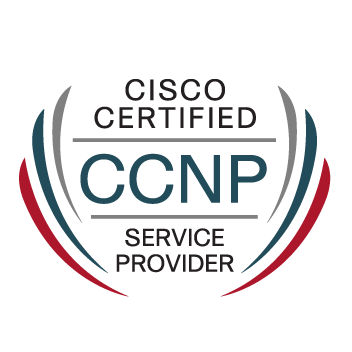- Cisco Community
- Technology and Support
- Service Providers
- MPLS
- VPLS Versus VPWS What are the differences?
- Subscribe to RSS Feed
- Mark Topic as New
- Mark Topic as Read
- Float this Topic for Current User
- Bookmark
- Subscribe
- Mute
- Printer Friendly Page
- Mark as New
- Bookmark
- Subscribe
- Mute
- Subscribe to RSS Feed
- Permalink
- Report Inappropriate Content
07-05-2021 03:57 PM
VPLS Versus VPWS What are the differences?
Solved! Go to Solution.
- Labels:
-
MPLS
Accepted Solutions
- Mark as New
- Bookmark
- Subscribe
- Mute
- Subscribe to RSS Feed
- Permalink
- Report Inappropriate Content
07-05-2021 06:31 PM
@Meddane :
VPWS
VPWS is an L2VPN technology that transmits Layer 2 services by simulating the basic behaviors and features of services, such as ATM, Ethernet, low-speed time division multiplexing (TDM) circuits, and synchronous optical network (SONET)/synchronous digital hierarchy (SDH) on a packet switched network (PSN). VPWS emulates the traditional leased line on an IP network and provides asymmetric and low-cost digital data network (DDN) services. For users at both ends of a VPWS connection, the connection is similar to the traditional leased line. VPWS functions as a point-to-point virtual private wire technology that can support almost all the link layer protocols.
VPLS
The virtual private LAN service (VPLS) is an MPLS-based Ethernet point-to-multipoint (P2MP) L2VPN service provided over a public network. VPLS ensures that geographically isolated user sites can communicate over MANs and WANs as if they were on the same LAN. VPLS is also called transparent LAN service (TLS).
The most different is that VPWS used on point to point (P2P), the VPLS used on point to multi point (P2MP)
- Mark as New
- Bookmark
- Subscribe
- Mute
- Subscribe to RSS Feed
- Permalink
- Report Inappropriate Content
07-05-2021 11:49 PM - edited 07-05-2021 11:55 PM
VPWS is used for point-to-point connections. This approach can be applicable to your spoke-to-spoke connectivity. There is no MAC address learning, as it is PtP service.
VPLS is by default full-mesh topology, this service emulates ethernet switch and requires MAC address learning to make forwarding decisions. Can be tuned also to hub-n-spoke topology.
- Mark as New
- Bookmark
- Subscribe
- Mute
- Subscribe to RSS Feed
- Permalink
- Report Inappropriate Content
07-05-2021 06:31 PM
@Meddane :
VPWS
VPWS is an L2VPN technology that transmits Layer 2 services by simulating the basic behaviors and features of services, such as ATM, Ethernet, low-speed time division multiplexing (TDM) circuits, and synchronous optical network (SONET)/synchronous digital hierarchy (SDH) on a packet switched network (PSN). VPWS emulates the traditional leased line on an IP network and provides asymmetric and low-cost digital data network (DDN) services. For users at both ends of a VPWS connection, the connection is similar to the traditional leased line. VPWS functions as a point-to-point virtual private wire technology that can support almost all the link layer protocols.
VPLS
The virtual private LAN service (VPLS) is an MPLS-based Ethernet point-to-multipoint (P2MP) L2VPN service provided over a public network. VPLS ensures that geographically isolated user sites can communicate over MANs and WANs as if they were on the same LAN. VPLS is also called transparent LAN service (TLS).
The most different is that VPWS used on point to point (P2P), the VPLS used on point to multi point (P2MP)
- Mark as New
- Bookmark
- Subscribe
- Mute
- Subscribe to RSS Feed
- Permalink
- Report Inappropriate Content
07-05-2021 09:32 PM
Does it means that VPWS is used for spoke and spoke architecture whike the VPLS is used for Hub to spoke ?
- Mark as New
- Bookmark
- Subscribe
- Mute
- Subscribe to RSS Feed
- Permalink
- Report Inappropriate Content
07-05-2021 11:49 PM - edited 07-05-2021 11:55 PM
VPWS is used for point-to-point connections. This approach can be applicable to your spoke-to-spoke connectivity. There is no MAC address learning, as it is PtP service.
VPLS is by default full-mesh topology, this service emulates ethernet switch and requires MAC address learning to make forwarding decisions. Can be tuned also to hub-n-spoke topology.
- Mark as New
- Bookmark
- Subscribe
- Mute
- Subscribe to RSS Feed
- Permalink
- Report Inappropriate Content
09-11-2021 08:45 PM
Hi Meddane,
For reference,
VPWS:
VPLS:
@Meddane wrote:
Does it means that VPWS is used for spoke and spoke architecture whike the VPLS is used for Hub to spoke ?
Discover and save your favorite ideas. Come back to expert answers, step-by-step guides, recent topics, and more.
New here? Get started with these tips. How to use Community New member guide




